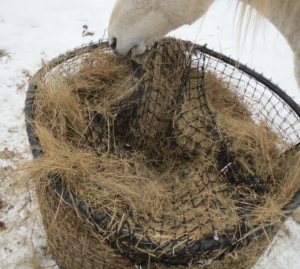NO METAL in Tumble Feeder means it’s far less likely to harm your horse’s mouth. It’s made with flexible mesh and slow feed netting.
Tumble Feeder, when used in slow feeding mode, and all slow feeders, restrict the rate of forage consumption by various means. Probably the most popular way is using haynets that have smaller openings. Other methods besides slow feed netting have emerged over the years. This includes, but it not limited to nylon webbing, hay bags, plastic grates, metal grates, in wooden or plastic containers with descending “lids” with large holes to smaller slot openings.
Any time you put something between a horse and their hay, there is potential for tooth or enamel wear. Less abrasive materials are preferred for this reason. However some tooth wear from grazing is normal for horses in general and their teeth continue to erupt for most of their life to make up for that wear, much like beavers. Horses often chew on wood and test out surfaces with their teeth. Most of those surfaces we’d prefer they did not chew, like stalls, fences, buildings and even paint on trucks. Long term cribbing can cause major damage to teeth as well.
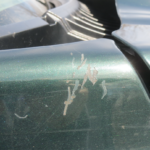
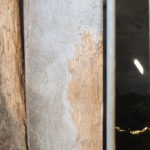
Tumble Feeder uses a combination of slow feed netting and flexible plastic mesh for the feeder sides. The horses tend to eat mainly from the netting, but can also eat from the mesh quite easily. It is soft and flexible. So far I’ve not seen excessive wear. The horse pictured has used a Tumble Feeder slow feeder for 2 years.
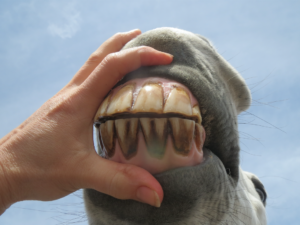
No significant incisor damage after 2 years using a Tumble Feeder in slow feeding mode.
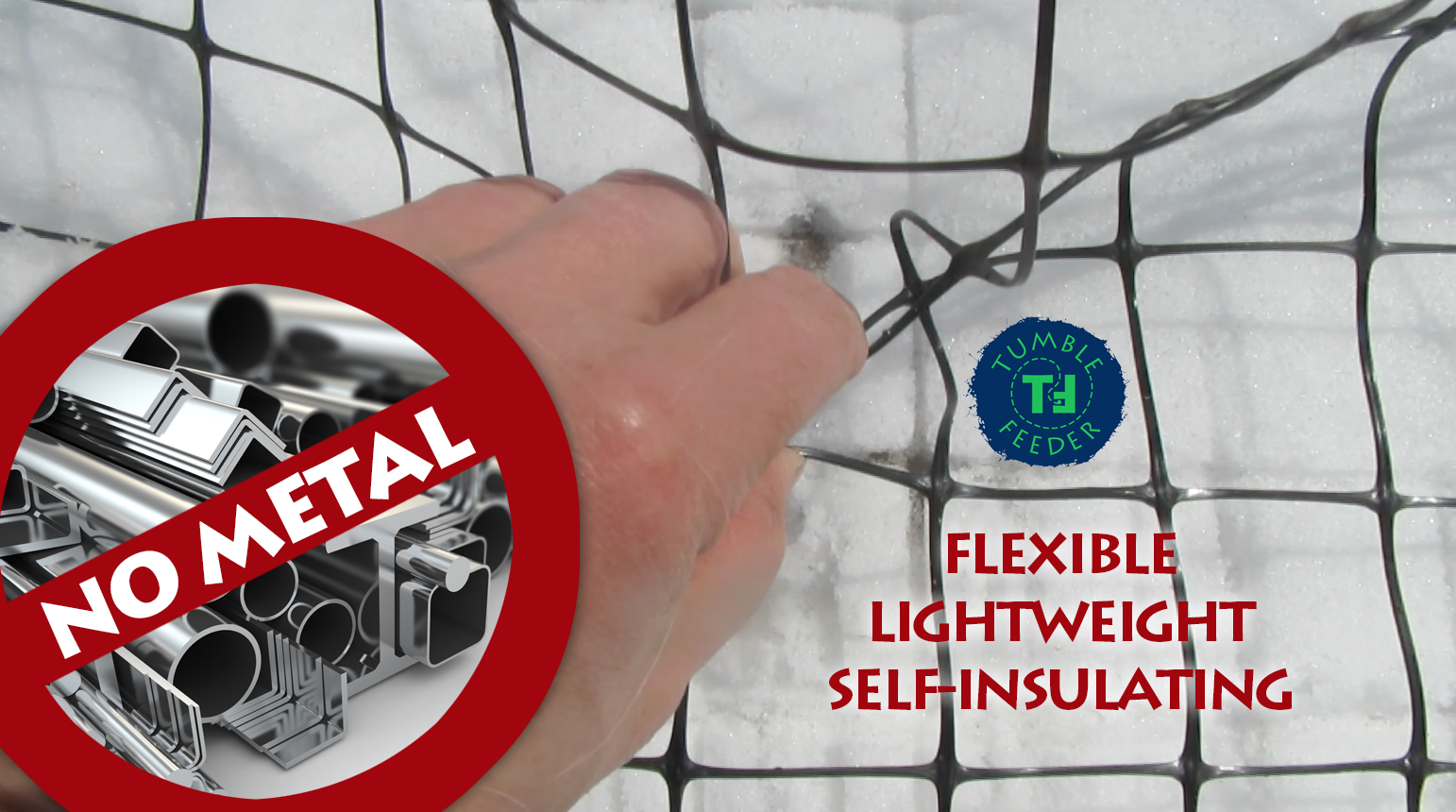
Pictures emerged on social media of incisor damage and prompted a facebook group called Slow-Feeder Research and Data Collection. People were encouraged to share pics of damage or lack of damage and what kind of slow feeder materials were being used. Unfortunately not a whole lot of pictures were shared, but two very poignant posts did emerge.
One great post was a video by McKinlay & Peters Equine Hospital It was created in answer to all the questions prompted by their post of this picture and their concerns about damage done by metal grates. Some slow feeders use metal mesh similar to the kind used between stalls or as stall fronts.
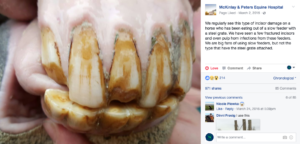
The other post was by Dylan McCaffrey (a farrier and equine dental professional), who made several very good points about the implications of NOT using slow feeding. For one, the issues associated with obesity like laminitis. You can read here and he also posted a photo of a cribber who lacked top incisors, but managed to eat very well, despite extreme damage. His post is a MUST READ for anyone who has concerns.

Damage from cribbing.
There were also pictures from people who had used metal grates with NO problems and one who had used haynets and had bad gum damage. The horse’s level of frustration probably has a lot to do with subsequent damage and just using slightly larger openings may alleviate problems. There are many options for slow feeders and types of netting, finding the right fit for your horse may take some experimenting.
Nearly all feeders recommend making free choice hay available along side initially. Tumble Feeder makes this easy with a free choice or semi-slow feed set up, so you can gradually reduce access without having to buy different size haynets.
